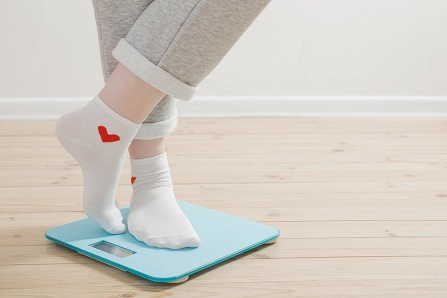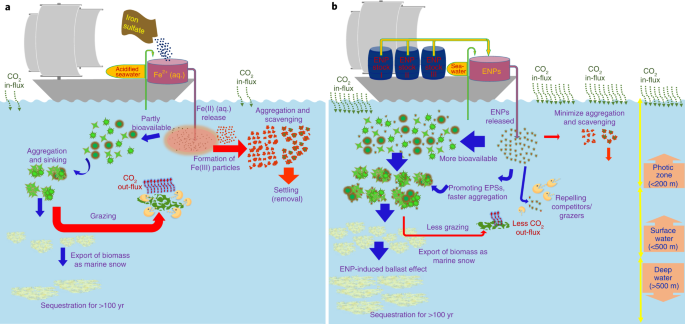2022-11-29 バッファロー大学(UB)

しかし、セマグルチドという薬剤の臨床試験の結果は、11月3日付けのNew England Journal of Medicine誌に先行オンライン掲載され、この分野の主要学会であるObesity Weekで発表されましたが、参加者、あるいは研究者が期待した以上のものであることが判明しました。
グルカゴン様ペプチド-1(GLP)受容体作動薬のセマグルチドを毎週注射した参加者の体格指数(BMI)の平均減少率は、プラセボの0.6%に対して16.1%となり、プロバイダーは驚きと熱意を持って反応し、国内メディアは「驚異的」「驚くべき」と表現した。
UBMD小児科で患者を診ているマストランドレアは、1型と2型糖尿病の子供と青年の血糖コントロールを良くするために、その後FDAに承認された他の薬に関する以前の国内研究を主導しています。彼女はまた、2020年に別のGLPアゴニストであるリラグルチドが小児および青年に体重減少をもたらすことを示す、別のNEJMの出版につながった研究を主導しました。
<関連情報>
- https://www.buffalo.edu/news/releases/2022/11/020.html
- https://www.nejm.org/doi/full/10.1056/NEJMoa2208601
青年期肥満症患者における週1回のセマグルチド投与について。 Once-Weekly Semaglutide in Adolescents with Obesity
Daniel Weghuber, M.D., Timothy Barrett, Ph.D., Margarita Barrientos-Pérez, M.D., Inge Gies, Ph.D., Dan Hesse, Ph.D., Ole K. Jeppesen, M.Sc., Aaron S. Kelly, Ph.D., Lucy D. Mastrandrea, M.D., Rasmus Sørrig, Ph.D., and Silva Arslanian, M.D. for the STEP TEENS Investigators
November 2, 2022 DOI: 10.1056/NEJMoa2208601
Abstract
BACKGROUND
A once-weekly, 2.4-mg dose of subcutaneous semaglutide, a glucagon-like peptide-1 receptor agonist, is used to treat obesity in adults, but assessment of the drug in adolescents has been lacking.
METHODS
In this double-blind, parallel-group, randomized, placebo-controlled trial, we enrolled adolescents (12 to <18 years of age) with obesity (a body-mass index [BMI] in the 95th percentile or higher) or with overweight (a BMI in the 85th percentile or higher) and at least one weight-related coexisting condition. Participants were randomly assigned in a 2:1 ratio to receive once-weekly subcutaneous semaglutide (at a dose of 2.4 mg) or placebo for 68 weeks, plus lifestyle intervention. The primary end point was the percentage change in BMI from baseline to week 68; the secondary confirmatory end point was weight loss of at least 5% at week 68.
RESULTS
A total of 201 participants underwent randomization, and 180 (90%) completed treatment. All but one of the participants had obesity. The mean change in BMI from baseline to week 68 was -16.1% with semaglutide and 0.6% with placebo (estimated difference, -16.7 percentage points; 95% confidence interval [CI], -20.3 to -13.2; P<0.001). At week 68, a total of 95 of 131 participants (73%) in the semaglutide group had weight loss of 5% or more, as compared with 11 of 62 participants (18%) in the placebo group (estimated odds ratio, 14.0; 95% CI, 6.3 to 31.0; P<0.001). Reductions in body weight and improvement with respect to cardiometabolic risk factors (waist circumference and levels of glycated hemoglobin, lipids [except high-density lipoprotein cholesterol], and alanine aminotransferase) were greater with semaglutide than with placebo. The incidence of gastrointestinal adverse events was greater with semaglutide than with placebo (62% vs. 42%). Five participants (4%) in the semaglutide group and no participants in the placebo group had cholelithiasis. Serious adverse events were reported in 15 of 133 participants (11%) in the semaglutide group and in 6 of 67 participants (9%) in the placebo group.
CONCLUSIONS
Among adolescents with obesity, once-weekly treatment with a 2.4-mg dose of semaglutide plus lifestyle intervention resulted in a greater reduction in BMI than lifestyle intervention alone. (Funded by Novo Nordisk; STEP TEENS ClinicalTrials.gov number, NCT04102189. opens in new tab.)



